Two-Way Messaging in Healthcare: Enhancing Patient Engagement, Medical Device Support & Real-Time
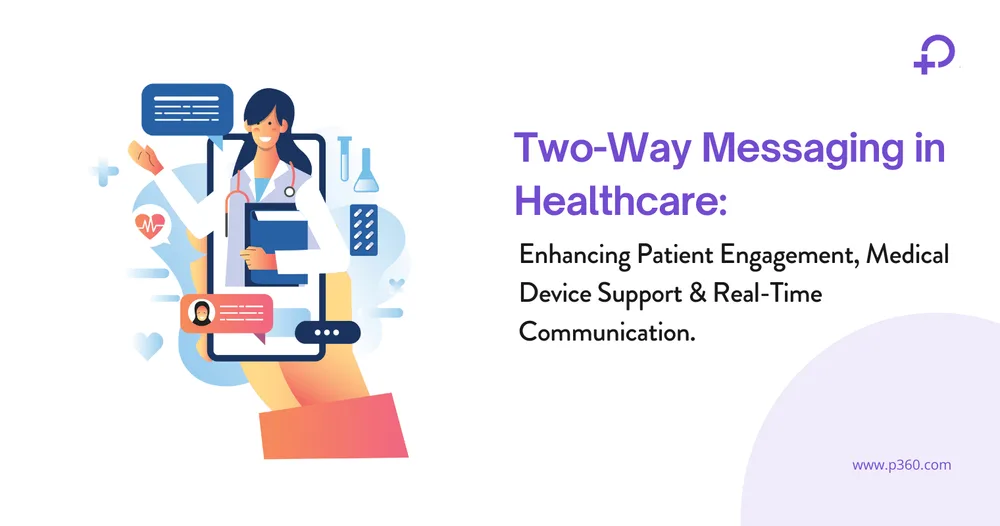
by Kathleen McQuade | Last Updated: April 3, 2025 | 1 min read
The healthcare industry is evolving rapidly, with a stronger focus on patient-centric communication. As medical devices become more sophisticated, patients increasingly rely on real-time support to manage their health effectively. However, traditional communication methods, such as phone calls and emails, often create delays and frustration. To address these challenges, two-way messaging in healthcare is transforming patient-provider interactions by enabling instant, secure, and seamless communication.
The Challenge of Healthcare Communication
Effective communication between healthcare providers and patients is critical for positive health outcomes. Many patients using home-based medical devices struggle with troubleshooting errors, medication adherence, and follow-up care. Traditional support channels are often slow and inefficient, leading to poor patient experiences. Long hold times on calls and delayed email responses can cause frustration and anxiety, especially when urgent support is required.
This is where two-way messaging in healthcare offers a game-changing solution. By providing real-time communication via SMS, WhatsApp, or in-app messaging, patients can instantly connect with their healthcare providers or medical device support teams. Quick responses to patient queries improve adherence to treatment plans, reduce hospital readmissions, and enhance overall healthcare outcomes.
The Rise of Two-Way Messaging for Patient Engagement
Healthcare organizations increasingly recognize the value of two-way messaging in healthcare for delivering personalized and timely support. Unlike one-way notifications, patient engagement solutions enable active conversations that enhance care coordination. Patients can send error codes, images, or symptoms through messaging platforms, allowing providers to respond quickly with accurate guidance.
For example, a patient using an insulin pump experiencing an error can instantly message a support agent through a healthcare communication platform. Within minutes, they receive troubleshooting steps or even a live chat option for more assistance. This level of engagement fosters trust, reduces treatment disruptions, and ensures better compliance with medical recommendations.
Why Healthcare Providers and Medical Device Support Teams Need Real-Time Interaction
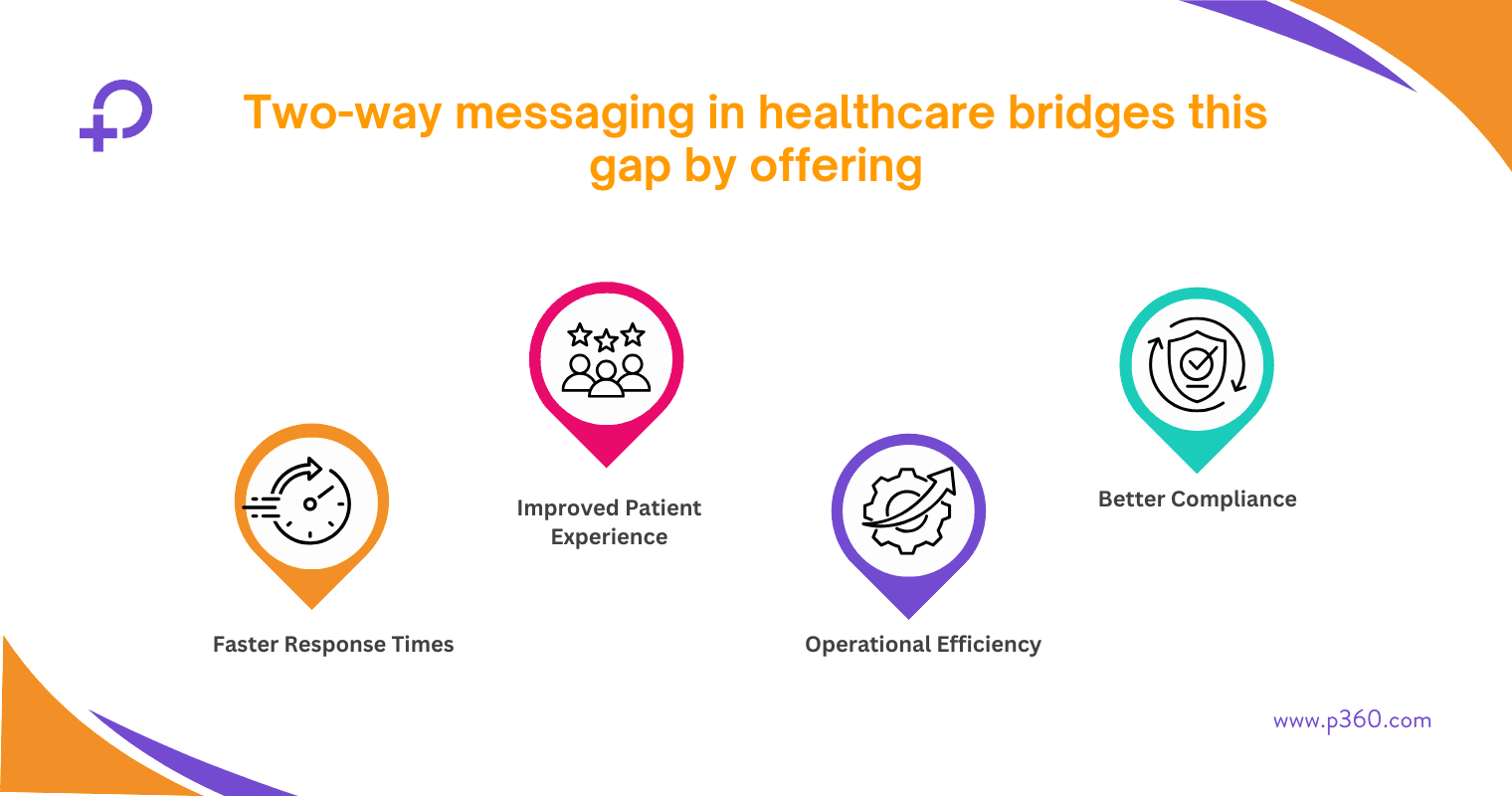
Real-time interaction is essential for both healthcare providers and medical device support teams. Without immediate access to assistance, patients may abandon treatment plans or misuse medical devices, leading to complications. Two-way messaging in healthcare bridges this gap by offering:
-
Faster Response Times: Unlike traditional support channels, messaging enables providers to assist patients immediately.
-
Improved Patient Experience: Direct, personalized interactions make patients feel more supported and engaged.
-
Operational Efficiency: Reducing call volumes and automating responses free up healthcare staff to focus on critical cases.
-
Better Compliance: Proactive reminders and alerts help patients follow prescribed treatment plans.
With the best messaging platform for patient engagement, healthcare organizations can ensure that patients receive timely, efficient, and personalized care. As digital communication continues to shape the industry, two-way messaging in healthcare is emerging as the most effective tool for enhancing patient support and improving overall health outcomes.
Explore More Relevant Articles on P360
- The Truth About Pharma Reps Sending Text Messages to Healthcare Professionals
- The Crucial Role of Signature Capture in Healthcare and Pharmaceuticals
- The Truth About Pharma Reps Sending Text Messages to Healthcare Professionals
- The Crucial Role of Signature Capture in Healthcare and Pharmaceuticals
- Understanding Pharmaceutical Marketing: Navigating the Complex Landscape of Healthcare Promotion
The Growing Need for Real-Time Patient Support
The demand for two-way messaging in healthcare is increasing as patients seek more accessible and efficient communication with their healthcare providers. Traditional support methods, such as phone calls and emails, often lead to frustration due to long wait times and impersonal responses. These outdated systems delay critical medical support, impacting patient satisfaction and adherence to treatment plans.
The Shift Toward Patient Engagement Solutions
The healthcare industry is moving toward patient engagement solutions that provide real-time, personalized support. Patients now expect instant assistance for medical device troubleshooting, medication reminders, and follow-up care. Without immediate communication, they may struggle to manage their health, leading to complications and higher hospital readmissions.
Two-way messaging in healthcare bridges this gap by allowing patients to engage with providers through SMS, WhatsApp, and other digital channels. Real-time responses ensure that patients receive timely assistance, improving treatment adherence and overall health outcomes.
Challenges of Traditional Support Systems
Many healthcare providers still rely on outdated support methods, which pose several challenges:
-
Long Wait Times: Patients often experience extended hold times when calling support centers, leading to frustration and delays in care.
-
Lack of Personalization: Generic automated responses do not address individual patient needs, reducing the effectiveness of support.
-
Limited Accessibility: Phone and email support require patients to navigate complex menus, making it difficult to get quick answers.
These challenges highlight the need for two-way messaging in healthcare, which provides immediate and personalized communication, enhancing the patient's experience.
How Real-Time Two-Way Messaging Helps
Real-time messaging solutions are transforming patient support by enabling direct communication through healthcare communication platforms. Patients can send text messages, images, or videos of their medical devices to receive instant troubleshooting assistance.
For example, a patient using a continuous glucose monitor experiencing an error can send a message via the best messaging platform for patient engagement. Within minutes, they receive a response with step-by-step guidance or an option for a live chat. This quick support reduces anxiety and ensures uninterrupted treatment.
Key Statistics on Healthcare Communication Platforms
The growing adoption of two-way messaging in healthcare is backed by industry data:
-
Over 70% of patients prefer digital messaging over phone calls for healthcare communication.
-
Healthcare organizations using real-time messaging see a 30% reduction in missed appointments.
-
Patient satisfaction increases by 40% when two-way messaging is implemented.
These statistics prove that patient engagement solutions and real-time messaging are essential for modern healthcare. By leveraging a healthcare communication platform, providers can enhance patient interactions, improve adherence, and streamline support operations.
With the right technology in place, two-way messaging in healthcare is revolutionizing how patients receive medical support, ensuring better outcomes and a more connected healthcare experience.
Two-Way Messaging for Home-Use Medical Devices
The healthcare industry is witnessing a rapid increase in the adoption of home-use medical devices, such as continuous glucose monitors (CGMs), insulin pumps, and portable dialysis machines. These devices empower patients to manage chronic conditions independently. However, they also come with challenges, including setup issues, troubleshooting errors, and adherence concerns. Two-way messaging in healthcare is proving to be an essential solution, offering real-time support and enhancing the patient's experience.
Challenges Patients Face with Home-Use Medical Devices
Many patients struggle with:
-
Error Codes & Alerts – Complex devices generate alerts that may be difficult for patients to understand.
-
Device Setup Issues – Incorrect setup can lead to malfunctions or inaccurate readings.
-
Troubleshooting Difficulties – Without immediate help, patients may discontinue or misuse their devices.
-
Limited Access to Support – Phone support often involves long wait times, leaving patients frustrated.
Without instant assistance, these challenges can lead to anxiety, treatment delays, and unnecessary hospital visits. Two-way messaging in healthcare is addressing these concerns by enabling real-time, personalized communication.
How Two-Way Messaging Improves Medical Device Support
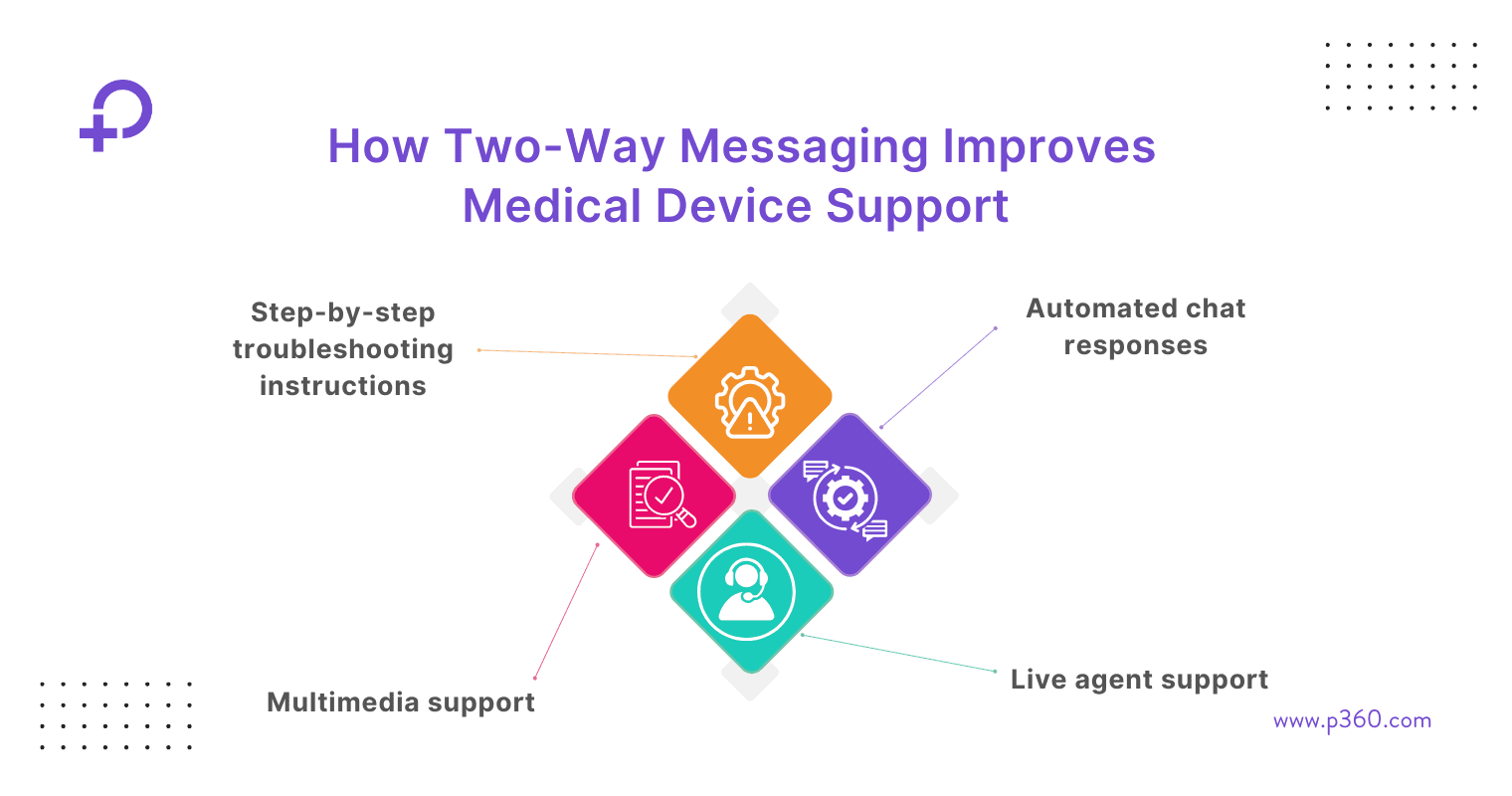
Two-way messaging in healthcare provides a direct and efficient way for patients to receive guidance from healthcare providers and medical device support teams. Instead of waiting on hold, patients can send a simple SMS or WhatsApp message describing their issue. This enables healthcare professionals to respond instantly with:
-
Step-by-step troubleshooting instructions tailored to the patient’s device.
-
Automated chat responses for common issues, reducing response times.
-
Live agent support for complex problems that require human intervention.
-
Multimedia support, allowing patients to send images or videos for better diagnosis.
The Role of Patient Engagement Solutions in Home-Use Devices
Integrating patient engagement solutions with home-use devices ensures a smoother patient experience. Healthcare providers can proactively engage patients by:
-
Sending reminders for medication adherence and device maintenance.
-
Offering educational content on proper device usage.
-
Monitoring patient data for early intervention in case of irregular readings.
By leveraging a healthcare communication platform, providers can create a seamless communication channel, helping patients use their devices correctly and confidently.
Why Two-Way Messaging is the Best Messaging Platform for Patient Engagement
-
Faster Response Times – Patients receive support in minutes instead of waiting hours.
-
Reduced Device Abandonment – Timely guidance helps patients continue using their devices correctly.
-
Improved Patient Satisfaction – Direct, real-time interaction builds trust and reduces frustration.
-
Lower Hospital Readmissions – Early troubleshooting prevents minor issues from escalating.
The adoption of two-way messaging in healthcare is transforming medical device support by ensuring patients receive timely, accessible, and personalized care. With the rise of home-use medical devices, healthcare organizations must embrace the best messaging platform for patient engagement to improve treatment outcomes and enhance patient confidence.
Enhancing Patient Experience with Two-Way Messaging
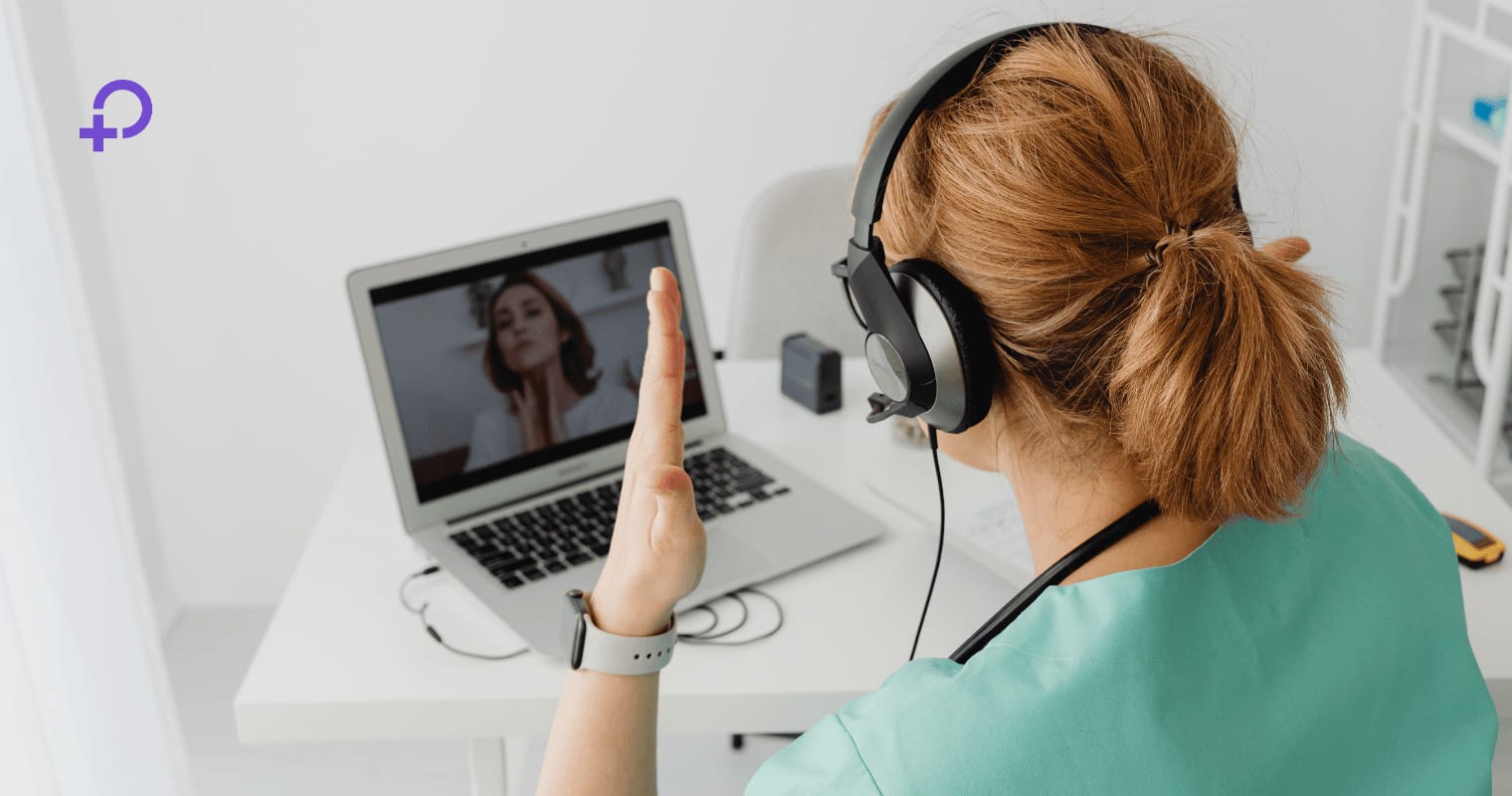
Healthcare providers must prioritize patient engagement to improve treatment outcomes and overall satisfaction. Patients managing chronic diseases such as diabetes, sleep apnea, and cardiovascular conditions often face challenges that require immediate support. Traditional communication methods, such as phone calls and emails, can cause delays, increasing patient anxiety. Two-way messaging in healthcare is changing this by offering real-time, personalized communication that enhances patient experience and ensures timely medical support.
Reducing Anxiety and Empowering Patients
Patients managing medical conditions at home often experience stress when unexpected issues arise. A malfunctioning insulin pump, a CPAP machine with a leak, or an unexplained drop in blood glucose levels can create panic. Two-way messaging in healthcare provides instant access to support, reducing uncertainty and empowering patients with quick solutions.
With patient engagement solutions, patients can:
-
Send a text message describing their issue instead of waiting on hold.
-
Receive real-time troubleshooting guidance from a healthcare provider or support team.
-
Access AI-driven chatbots that offer automated solutions to common problems.
Instant responses ensure that patients feel supported, reducing their anxiety and encouraging them to adhere to their treatment plans.
Personalized Responses for a Better Healthcare Communication Platform Experience
Personalized support plays a crucial role in building patient trust and improving adherence. Two-way messaging in healthcare enables healthcare providers to tailor responses based on patient history, device usage, and medical conditions. Through a healthcare communication platform, providers can:
-
Offer device-specific troubleshooting steps based on patient inquiries.
-
Send customized medication reminders and follow-up instructions.
-
Provide educational resources to help patients manage their condition more effectively.
By making patient communication more personalized, two-way messaging in healthcare improves engagement and enhances the patient experience.
Real-Time Messaging for Chronic Disease Management
Patients with chronic conditions need consistent monitoring and timely interventions. Two-way messaging in healthcare ensures that healthcare providers can track patient progress and respond instantly when issues arise.
For example:
-
Diabetes Management: Patients using continuous glucose monitors (CGMs) can receive alerts when their blood sugar levels fluctuate. A simple text message allows them to confirm symptoms and receive immediate instructions.
-
Sleep Apnea Treatment: CPAP users can report mask leaks or machine errors through the best messaging platform for patient engagement, reducing the need for in-person visits.
-
Cardiac Monitoring: Wearable heart monitors can detect irregular heartbeats and trigger automated alerts, prompting patients to seek immediate care.
These proactive interactions enhance patient outcomes and reduce the risk of complications.
Beyond Troubleshooting: Proactive Patient Engagement
Healthcare providers are shifting from reactive support to proactive engagement to improve patient care. Two-way messaging in healthcare is now a critical tool in ensuring continuous communication between patients and providers. By using patient engagement solutions, healthcare organizations can send reminders, deliver educational content, and monitor patient health in real time. These proactive efforts help reduce hospital readmissions and improve long-term patient outcomes.
The Role of Two-Way Messaging in Proactive Healthcare
Traditional patient support is often limited to troubleshooting medical device errors or addressing urgent concerns. However, two-way messaging in healthcare is now being used for proactive interventions. Through SMS, WhatsApp, and in-app messaging, healthcare providers can:
-
Check in with patients regularly to track progress and address concerns before they escalate.
-
Send reminders for medication adherence to ensure patients follow treatment plans.
-
Monitor chronic conditions remotely, reducing the need for frequent in-person visits.
This proactive approach improves medical device support and ensures patients receive timely assistance without delays.
How Providers Use SMS & WhatsApp for Medication Adherence
Medication adherence remains a significant challenge in healthcare. Missed doses can lead to complications, hospitalizations, or even treatment failure. Two-way messaging in healthcare provides a simple, automated solution to help patients stay on track.
-
Automated SMS reminders notify patients when it’s time to take their medication.
-
WhatsApp messaging allows real-time responses, where patients can confirm medication intake.
-
Alerts can be customized based on patient history, dosage schedules, and treatment plans.
By integrating these features into a healthcare communication platform, providers ensure better adherence rates and improved patient outcomes.
AI-Powered Messaging for Patient Education
Education is key to patient empowerment. Two-way messaging in healthcare is being used to deliver targeted educational content that helps patients understand their condition and treatment plan. AI-powered messaging can:
-
Provide answers to common patient questions about their condition.
-
Send step-by-step guides on how to use medical devices properly.
-
Deliver personalized health tips based on patient data and past interactions.
With the best messaging platform for patient engagement, healthcare organizations can ensure patients receive the right information at the right time.
Reducing Hospital Readmissions with Real-Time Messaging
Hospital readmissions are costly and often preventable. Two-way messaging in healthcare allows providers to stay connected with discharged patients, ensuring they follow post-care instructions.
-
Post-discharge follow-ups help patients manage recovery at home.
-
Instant access to support prevents minor issues from escalating into emergencies.
Proactive symptom tracking helps identify potential complications early.
By leveraging patient engagement solutions, healthcare providers can create a more connected, efficient, and patient-centric system. Two-way messaging in healthcare is no longer just about troubleshooting—it’s about building stronger, long-term relationships with patients while improving health outcomes.
The Business Impact on Medical Device Manufacturers
Medical device manufacturers are increasingly adopting two-way messaging in healthcare to enhance customer support and improve operational efficiency. As home-use medical devices become more common, patients require immediate assistance for troubleshooting, device setup, and ongoing maintenance. Traditional support channels, such as phone calls and emails, often result in long wait times and frustrated users. With a healthcare communication platform, manufacturers can streamline communication, reduce costs, and improve patient adherence.
Reducing Support Call Volume & Optimizing Resources
Handling a high volume of patient inquiries can strain customer support teams. Many of these inquiries involve routine issues, such as device setup or minor troubleshooting. Two-way messaging in healthcare enables manufacturers to:
-
Automate responses for common issues through AI-powered chatbots.
-
Allow patients to send images or videos for faster troubleshooting.
-
Offer real-time support via SMS, WhatsApp, or in-app messaging, reducing phone call dependency.
By integrating patient engagement solutions, manufacturers can resolve issues more efficiently while reducing the burden on their support teams.
Enhancing Patient Satisfaction & Device Adherence
Instant support improves the overall patient experience. With medical device support available through real-time messaging, patients receive immediate guidance on device functionality, ensuring they use it correctly. This leads to:
-
Faster issue resolution, reducing frustration and increasing trust in the brand.
-
Improved device adherence, as patients receive reminders and troubleshooting help.
-
Higher patient engagement, resulting in better treatment outcomes.
Providing quick, accessible support through the best messaging platform for patient engagement fosters brand loyalty and ensures patients stay committed to their treatment plans.
Reducing Device Returns & Improving Operational Efficiency
Many device returns are preventable and occur due to user error rather than product defects. Two-way messaging in healthcare helps manufacturers address patient concerns before they escalate, leading to:
-
Fewer unnecessary returns and replacements, saving costs.
-
Proactive troubleshooting, allowing issues to be resolved remotely.
-
Increased efficiency, as manufacturers can analyze patient interactions to improve product design and user experience.
By leveraging a healthcare communication platform, medical device manufacturers can streamline operations, improve support efficiency, and enhance patient satisfaction. With two-way messaging in healthcare, businesses not only reduce costs but also provide a better experience for their customers.
Addressing Data Security & Compliance Challenges
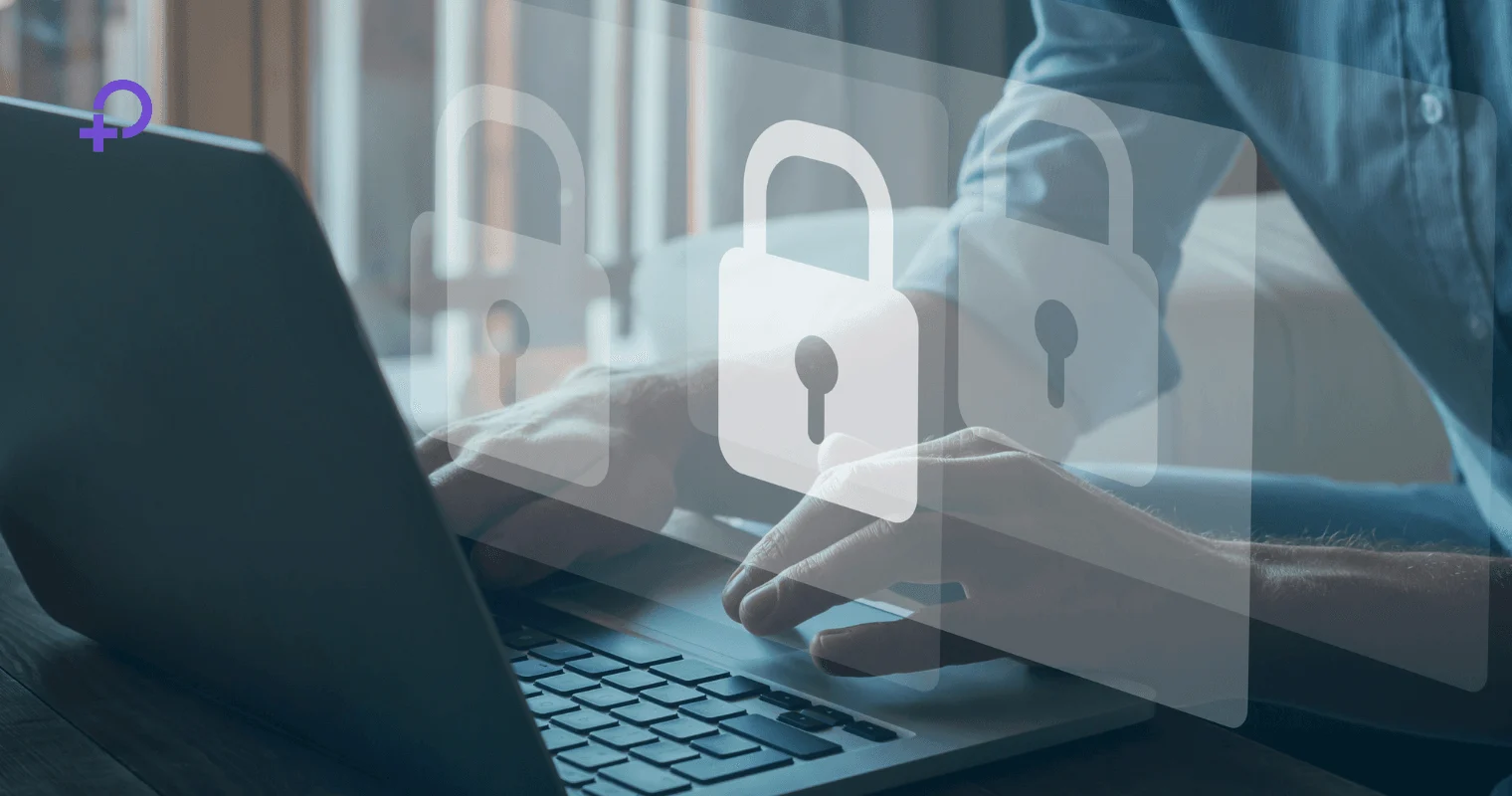
As healthcare communication becomes more digital, data security and compliance are top priorities for providers and medical device manufacturers. Two-way messaging in healthcare enables seamless patient-provider interaction, but without the right security measures, sensitive patient information may be at risk. Ensuring compliance with HIPAA and other regulations is essential to maintaining patient trust and protecting medical data.
The Importance of HIPAA-Compliant Messaging Solutions
Regulatory bodies, such as the Health Insurance Portability and Accountability Act (HIPAA) in the U.S., set strict guidelines for handling patient data. Any communication involving protected health information (PHI) must be encrypted and securely stored. A healthcare communication platform must:
-
Ensure end-to-end encryption to prevent unauthorized access.
-
Authenticate users before granting access to sensitive data.
-
Maintain audit trails to track all interactions for compliance purposes.
By implementing HIPAA-compliant patient engagement solutions, healthcare organizations can minimize risks and enhance security.
How Encryption & Access Control Improve Security
Security threats in healthcare, such as data breaches and cyberattacks, can lead to legal and financial consequences. Two-way messaging in healthcare must incorporate:
-
End-to-end encryption, ensuring messages are only accessible to authorized recipients.
-
Role-based access controls, restricting data access to approved personnel.
-
Multi-factor authentication (MFA), adding an extra layer of security for logins.
These security measures ensure that patient-provider conversations remain private, protecting both organizations and individuals.
Why Secure Patient Engagement Solutions Are Non-Negotiable
Trust is critical in healthcare. Patients expect their medical data to be handled responsibly. A healthcare communication platform that lacks security features can lead to compliance violations, financial penalties, and loss of credibility.
By adopting the best messaging platform for patient engagement, healthcare providers and medical device manufacturers can:
-
Ensure compliance with data protection regulations.
-
Prevent unauthorized access to patient information.
-
Strengthen patient confidence in digital healthcare solutions.
As digital communication continues to grow, two-way messaging in healthcare must prioritize security, ensuring patient data remains safe while improving the overall healthcare experience.
ZING Engagement Suite: The Future of Two-Way Messaging
The need for two-way messaging in healthcare is growing as medical device manufacturers and healthcare providers seek efficient ways to engage with patients. ZING from P360 offers an advanced solution designed specifically for medical device support and patient-provider communication. With real-time messaging capabilities, AI-powered automation, and HIPAA-compliant security, ZING is setting new standards for patient engagement solutions in the life sciences industry.
Omnichannel Communication for Seamless Patient Engagement
Patients expect flexibility in communication, and ZING delivers through its omnichannel approach. Whether through SMS, WhatsApp, or in-app messaging, ZING enables instant, secure interactions between patients and healthcare teams. This capability ensures that patients can:
-
Receive real-time support for troubleshooting medical devices.
-
Get medication reminders and follow-up instructions through their preferred channels.
-
Communicate easily with providers without phone call wait times.
By integrating multiple messaging platforms, ZING enhances two-way messaging in healthcare, making patient interactions more efficient and accessible.
AI Chatbots & Automation for Patient Education
Automation is a critical feature in modern healthcare communication platforms. ZING’s AI-driven chatbots streamline medical device support by:
-
Providing instant answers to common patient inquiries.
-
Guiding users through step-by-step troubleshooting processes.
-
Delivering personalized health education and reminders.
Through the best messaging platform for patient engagement, ZING ensures that routine patient interactions are managed efficiently, allowing healthcare teams to focus on more complex cases.
HIPAA-Compliant Security & EHR/CRM Integration
Data security is non-negotiable in healthcare. ZING is built with HIPAA-compliant encryption and access controls to protect patient data. The platform also integrates seamlessly with EHR and CRM systems, allowing healthcare providers to:
-
Maintain secure patient communication records.
-
Access patient history for personalized messaging.
-
Ensure compliance with data privacy regulations.
With these capabilities, ZING not only enhances two-way messaging in healthcare but also strengthens trust between patients and providers.
The Future of Patient Communication
ZING is redefining how medical device support and patient engagement solutions operate. By leveraging AI, automation, and omnichannel messaging, it provides the best messaging platform for patient engagement in the healthcare sector. As the demand for two-way messaging in healthcare continues to rise, ZING stands out as the most advanced and secure solution for life sciences organizations.
Transforming Healthcare Communication
The rise of two-way messaging in healthcare has reshaped the way healthcare providers, medical device manufacturers, and patients interact. With real-time messaging, patient support is now more accessible, personalized, and efficient. This shift has significantly improved patient engagement solutions, allowing healthcare organizations to provide seamless communication, reduce response times, and enhance overall care delivery.
The Long-Term Impact on Patient Engagement
Effective patient communication is essential for better treatment adherence and improved health outcomes. Two-way messaging in healthcare enables proactive support through real-time troubleshooting, medication reminders, and automated patient education. Patients feel more empowered and confident in managing their health, leading to fewer hospital readmissions and improved device adherence.
A well-integrated healthcare communication platform ensures that patient interactions are streamlined, secure, and compliant. By adopting these digital communication tools, healthcare organizations can foster long-term patient trust and loyalty.
How ZING from P360 is Revolutionizing Medical Device Support
Medical device manufacturers face increasing demands for better patient support. ZING from P360 offers a healthcare communication platform that simplifies medical device support by:
-
Providing omnichannel communication via SMS, WhatsApp, and in-app messaging.
-
Integrating AI-powered chatbots for automated troubleshooting.
-
Ensuring HIPAA-compliant messaging to protect patient data.
With these features, ZING enhances two-way messaging in healthcare, delivering faster, more reliable, and efficient support to patients using home medical devices.
The Future of Healthcare Communication Platforms
The evolution of two-way messaging in healthcare will continue with AI-driven automation, predictive analytics, and enhanced patient personalization. Future patient engagement solutions will focus on:
-
AI-powered messaging for personalized patient care.
-
Automated workflows for proactive engagement.
-
Seamless integration with EHR/CRM systems for better care coordination.
Healthcare providers and medical device manufacturers must embrace these innovations to stay ahead. By leveraging the best messaging platform for patient engagement, organizations can create a patient-centric communication model that improves outcomes and enhances the overall healthcare experience.